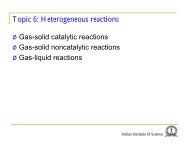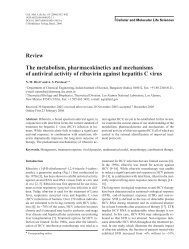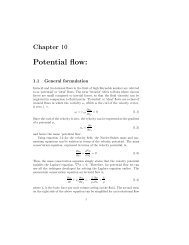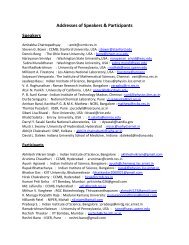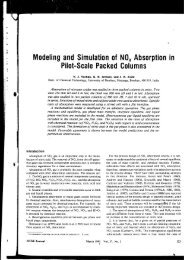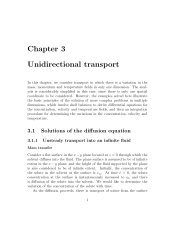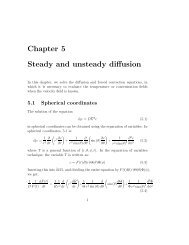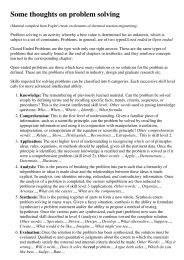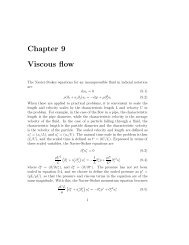Chapter 11 Boundary layer theory
Chapter 11 Boundary layer theory
Chapter 11 Boundary layer theory
Create successful ePaper yourself
Turn your PDF publications into a flip-book with our unique Google optimized e-Paper software.
<strong>11</strong>.1. STAGNATION POINT FLOW 9<br />
perpendicular to the surface of the object. Over length scales small compared<br />
to the radius of curvature of the object, the flow can be approximated by a<br />
fluid stream incident on a flat plate as shown in figure . In the potential<br />
flow approximation, the stream function and the velocity components, in the<br />
co-ordinate system shown in figure , are<br />
ψ = ˙γxy (<strong>11</strong>.41)<br />
u x = ˙γx (<strong>11</strong>.42)<br />
u y = −˙γy (<strong>11</strong>.43)<br />
where ˙γ is the strain rate (∂u x /∂y) = −(∂u y /∂x), which has units of inverse<br />
time. The pressure in the potential flow is,<br />
p = − ρ(u2 x + u 2 y)<br />
2<br />
= − ρ˙γ2 (x 2 + y 2 )<br />
2<br />
(<strong>11</strong>.44)<br />
The boundary conditions are the no-slip condition at the surface of the plate,<br />
u x<br />
u y<br />
= ∂ψ = 0 at y = 0<br />
∂y<br />
(<strong>11</strong>.45)<br />
= − ∂ψ = 0 at y = 0<br />
∂x<br />
(<strong>11</strong>.46)<br />
while the condition that the velocity is equal to the potential flow solution<br />
at a large distance from the plate can be written as,<br />
ψ → ˙γxy for y → ∞ (<strong>11</strong>.47)<br />
The potential flow solution for the velocity <strong>11</strong>.42 does not satisfy the boundary<br />
condition at the surface of the plate, and so it is necessary to postulate<br />
a boundary <strong>layer</strong> very close to the surface where viscous effects become important.<br />
In this boundary <strong>layer</strong>, it is necessary to solve the boundary <strong>layer</strong><br />
equations <strong>11</strong>.9, <strong>11</strong>.19 and <strong>11</strong>.20, subject to the appropriate boundary conditions,<br />
to obtain the velocity profile.<br />
The thickness of the boundary <strong>layer</strong> can be inferred as follows. In the<br />
flow past a flat plate, the boundary <strong>layer</strong> thickness at a distance x from the<br />
upstream edge was found to be proportional to (νx/U ∞ ) 1/2 . In the stagnation<br />
point flow, the velocity U ∞ in the potential flow outside the boundary



